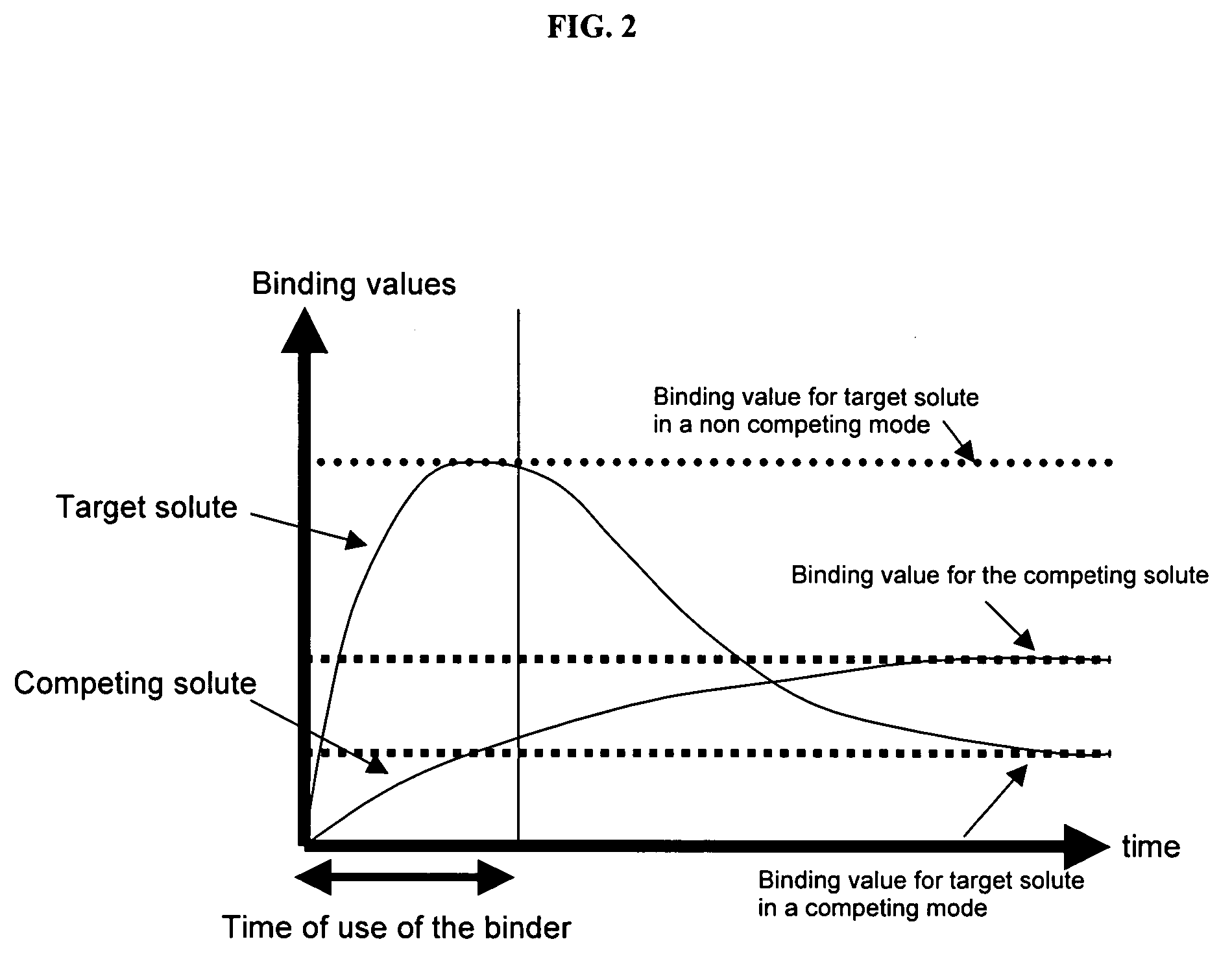Ion binding compositions
a composition and ion technology, applied in the direction of capsule delivery, microcapsules, pharmaceutical delivery mechanisms, etc., can solve the problems of high serum phosphate concentration and high calciumphosphate product, low binding capacity, and patients' risk of coronary calcification, so as to improve the permeability of the shell component
- Summary
- Abstract
- Description
- Claims
- Application Information
AI Technical Summary
Benefits of technology
Problems solved by technology
Method used
Image
Examples
example 1
Synthesis of Core-Shell Crosslinked Polyallylamine Particles
[0105]In this process, spherical particles were formed by an inverse suspension procedure wherein a prepolymer (polyallylamine) is crosslinked with epichlorohydrine. A block copolymer was used to impart mechanical stability to the droplets during the crosslinking reaction and provide a shell membrane chemically anchored to the core particle.
General Procedure for Block Copolymers Synthesis
[0106]The block copolymers were prepared by RAFT living free radical polymerization method, using a dithiocarbazide compound as a reversible chain transfer agent (CTA) and a diazonitrile free radical initiator (AMVN) indicated below:
[0107]
Synthesis of Poly(n-butyl acrylate-co-t-butyl acrylate) First Block
[0108]n-Butyl acrylate (25 g, 195 mmol) and t-butyl acrylate (25 g, 195 mmol) were combined with the CTA (173:1 Monomer:CTA, 616 mg, 2.26 mmol)) and AIBN (18.6 mg, 0.113 mmol). The monomer to CTA ratio is fixed so that the theoretical numbe...
example 2
Synthesis of 1,3-Diaminopropane / epichlorohydrin Crosslinked Beads (Referred to herein as: Bead-Pi-4-s)
[0119]The reaction vessel used was a 3-liter, three necked round bottom flask with four side baffles, equipped with an oil heating bath, cold-water reflux condenser, and mechanical stirrer with a 3 inch propeller. To this reaction vessel is introduced a solution of 1,3-diaminopropane (90.2 g, 1.21 mole) dissolved in 90.2 g of water, surfactant (branched dodecylbenzene sulfonic acid sodium salt, 6.4 g dissolved in 100 g of water), and 1 Kg of toluene. This initial charge is agitated to 600 rpm for 2 minutes and then lowered to 300 rpm for 10 minutes before the first addition of epichlorohydrin. This speed is maintained through out the experiment. The solution was heated to 80° C. and maintained at this temperature throughout the experiment.
[0120]Into a separate vessel, a 40 mass % solution of epichlorohydrin in toluene was prepared. Using a syringe pump, 1.2 equivalents of epichloroh...
example 3
Preparation of ethyl cellulose shell / 1,3 di-amino propane epichlorohydrine Crosslinked Core Particle
[0123]The beads obtained from Example 2 are spray-coated with an ethyl cellulose polymer shell using a Wurster fluid bed coater 2″-4″ / 6″ Portable Unit. The fluidized bed unit is operated so that an average 5 microns thick coating is deposited on the core particles, using a 30 wt-% solid aqueous emulsion (Aquacoat® ECD, FMC corp.).
PUM
| Property | Measurement | Unit |
|---|---|---|
| thickness | aaaaa | aaaaa |
| size | aaaaa | aaaaa |
| thickness | aaaaa | aaaaa |
Abstract
Description
Claims
Application Information
 Login to View More
Login to View More - R&D
- Intellectual Property
- Life Sciences
- Materials
- Tech Scout
- Unparalleled Data Quality
- Higher Quality Content
- 60% Fewer Hallucinations
Browse by: Latest US Patents, China's latest patents, Technical Efficacy Thesaurus, Application Domain, Technology Topic, Popular Technical Reports.
© 2025 PatSnap. All rights reserved.Legal|Privacy policy|Modern Slavery Act Transparency Statement|Sitemap|About US| Contact US: help@patsnap.com



